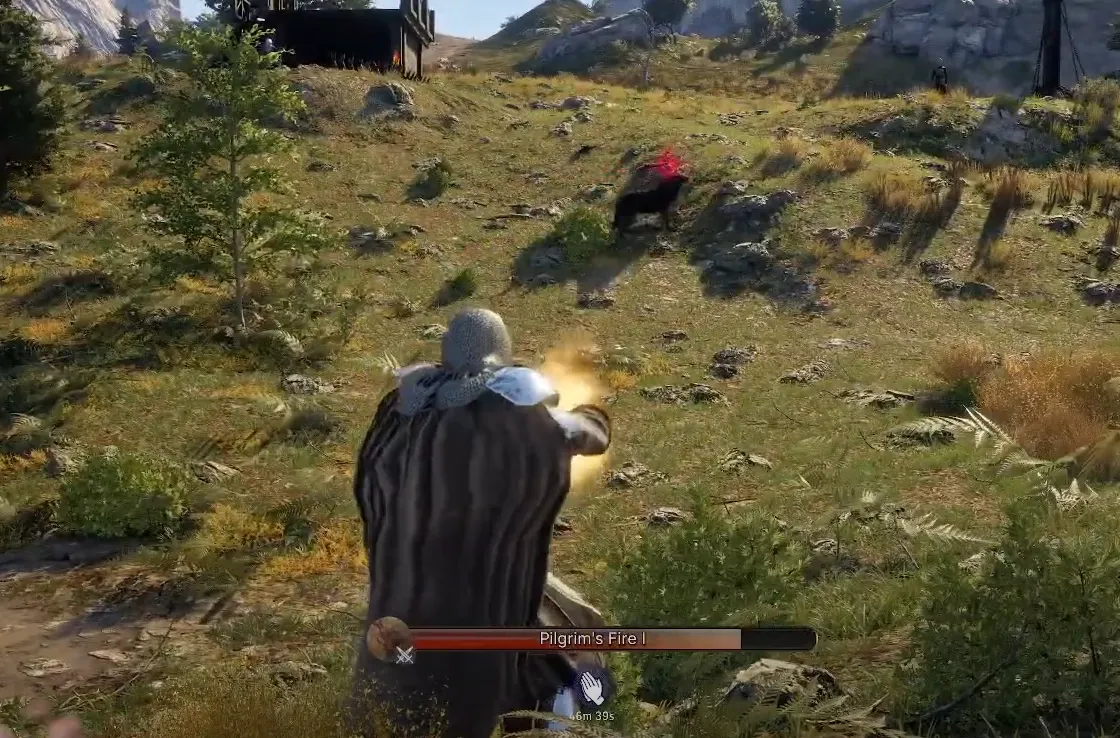Magic in Pax Dei isn’t a talent tree or a class you pick; it’s a layer of abilities that flows from items you equip and rituals you perform. The fiction treats magic as a given — something that seeps into the world and is woven into daily life — and the systems reflect that. In practice, your “spell list” is your loadout.
Lore frame: what “magic” is in Pax Dei
The world draws a line between the natural (this current creation), the extra‑natural (remnants from past creations), and the truly supernatural (realms and forces that never belonged to any creation). Magic originates from outside that natural order. People inside creation don’t fully understand its mechanism; they borrow, channel, and experiment — ideally without burning down the village.
That design shows up in the game’s tone: magic is treated as real and commonplace, but still dangerous and partially unknowable. If you dig deep into dungeons, you’re literally descending through old creations where otherworldly rules still leak through.
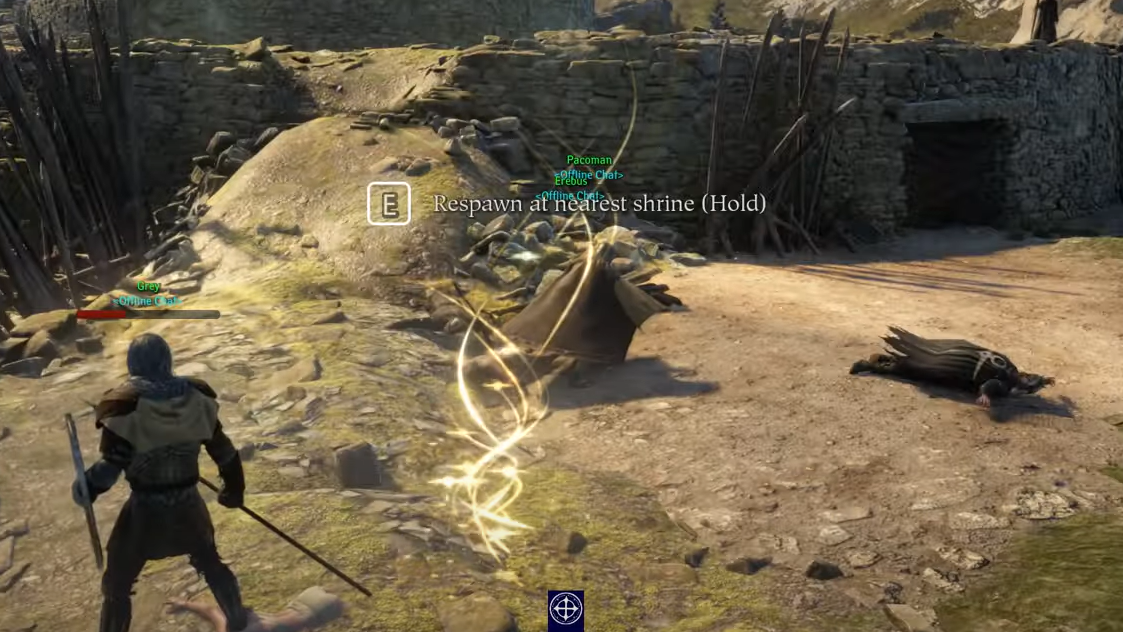
Two pillars: item‑granted spells and Divine Miracles
Pax Dei offers magic through two distinct vectors:
- Spells on gear: Armor, weapons, and accessories can grant active abilities — healing bursts, protective bubbles, control effects, mobility buffs, and more. Your bars change as your equipment changes. Itemization is progression.
- Miracles powered by Grace: Separate from loot, you can call on the Divine by spending Grace to trigger “Miracles” that confer powerful or practical effects and bonuses. It’s a parallel track to item abilities and tied to the game’s spiritual economy.
There’s no separate “mage” class. You assemble a kit by collecting and equipping items with abilities, and by deciding when to invest Grace to invoke Miracles.
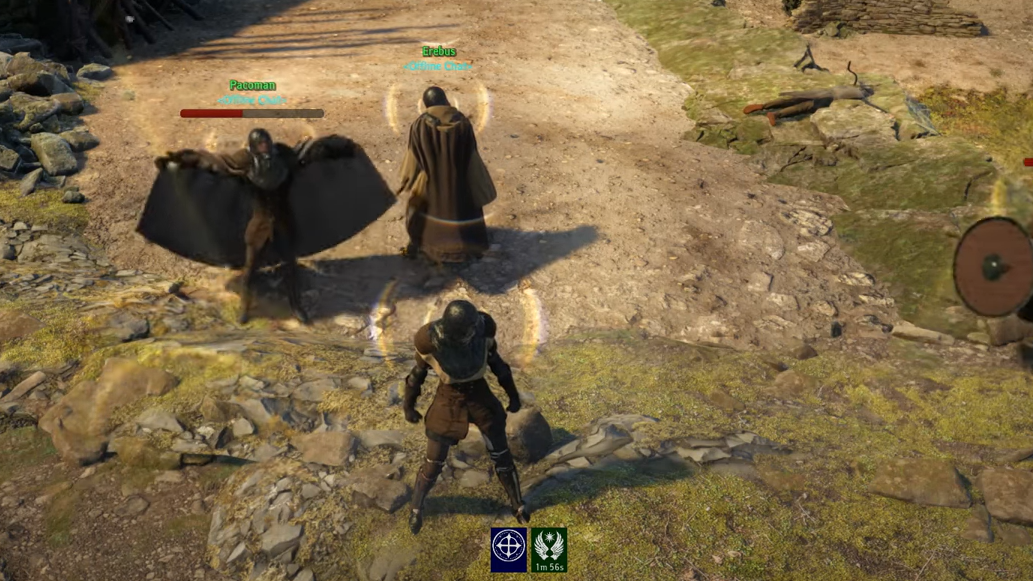
What counts as a “spell” right now
The current build includes a broad set of named abilities that fall into familiar roles — heals, buffs, shields, control, mobility — along with weapon specials that appear in the same interface. Below are representative examples players encounter on gear today, grouped by role, with how they generally apply in combat.
| Spell | Role | Application | Notes |
|---|---|---|---|
| Aura of Life | Support | Persistent aura | Creates a sustained, proximity-based benefit for allies. |
| Consecrated Ground | Healing | Ground AoE | Area placed on the floor that heals over time. |
| Detonation of Life | Healing | AoE burst | Instant group heal centered on the caster or target area. |
| Divine Orb | Healing | Projectile | Single-target heal delivered as a ranged bolt. |
| Divine Intervention | Healing | Conditional | Emergency heal that triggers when targets are low on health. |
| Divine Shield | Protection | Shield | Temporary barrier that reduces or absorbs incoming damage. |
| Haunting Memories | Crowd control | AoE | Mesmerize-style effect that disables multiple enemies at once. |
| Breath of Joy / II | Buff | Self | Run speed increase, with multiple potency tiers. |
| Breath of Life | Healing | Self (channeled) | Channel to restore health over a short window. |
| Breath of Spirit | Resource | Self | Energizes the caster to restore combat resources. |
| Chronoseer | Utility | Self or party | Cooldown reduction effect to accelerate ability reuse. |
| Chrono Ward | Protection | Ward | Temporal defense with rebound/deflection-style behavior. |
| Frenzy | Buff | Self | Attack speed increase for a brief window. |
| Breath of Balance | Utility | Targeted | Replenishes an ally’s key resource or vitality. |
| Alacrity | Buff | Self or party | Haste‑style acceleration for movement or actions. |
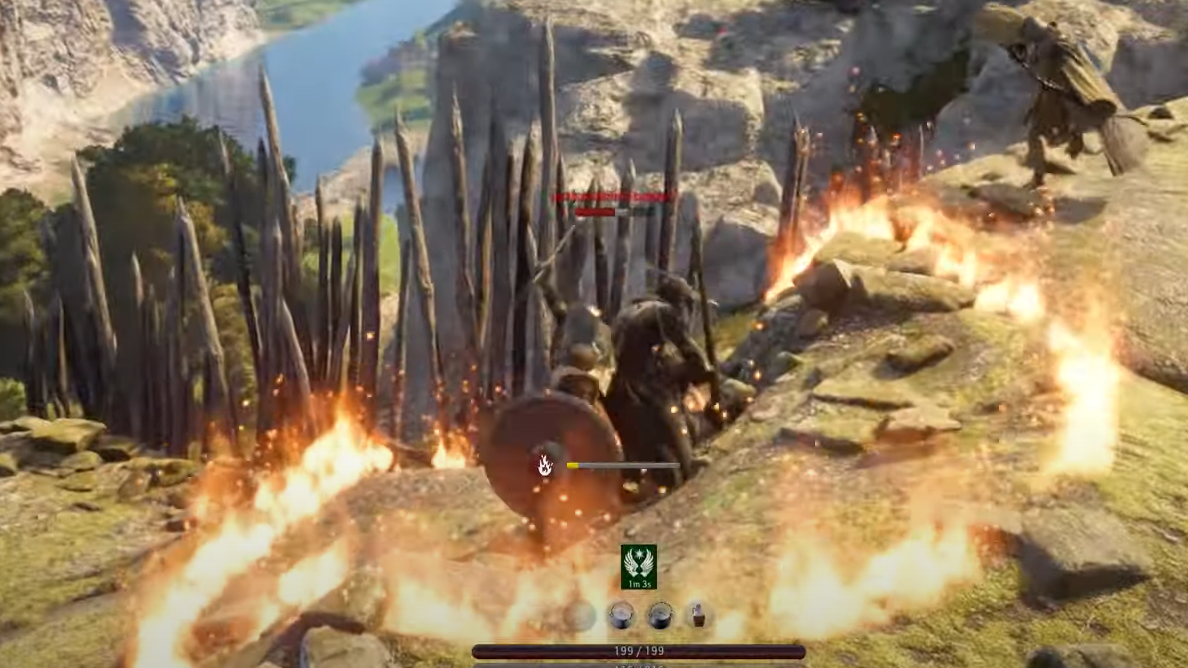
How you acquire magic (and why gear matters)
Because spells are tied to items, progression is about obtaining, crafting, and curating the right pieces. In the early game, small groups can secure basic healing and support abilities from accessible encounters; going deeper into dungeons and tackling stronger enemies expands your options and potency. Clans move faster here — more people to farm and share drops — but it’s viable to solo farm entry‑tier magic on the right targets with solid fundamentals and patience.
Look out for three things as you hunt:
- Source items: Named armor/weapon pieces and accessories that explicitly grant a spell. Hovering or inspecting will show the ability.
- Unlock requirements: Some abilities are bound to specific drops, recipes, or crafted variants, reinforcing the PvE and crafting loop.
- Synergy: Because abilities live on gear, swapping a chestpiece or charm can radically change your role. Keep multiple setups.
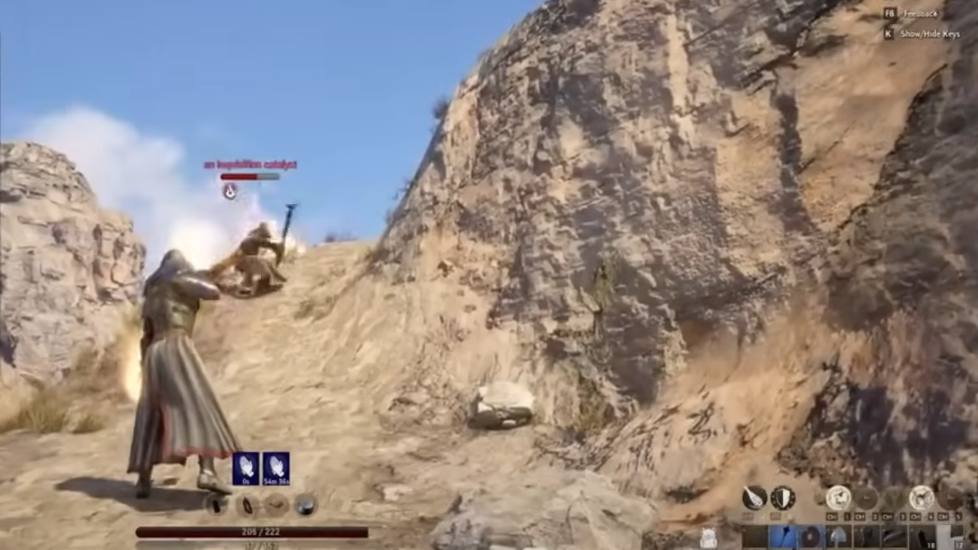
Costs and constraints: resources, cooldowns, and reagents
Ability use leans on the same moment‑to‑moment energy economy that governs combat; there isn’t a separate “mana” silo to manage. Cooldowns gate repeat use, and some spells require consumable reagents sourced from the crafting and gathering professions. That makes your support network — crafters in your clan, or trade — part of your magic throughput.
Miracles and Grace: the other half of magic
Beyond loot, the game folds in Divine intervention as a system. By spending Grace — a resource you earn through play — you can perform Miracles that offer powerful or practical effects. These are not gear replacements; they sit alongside your item‑granted abilities and can be timed for exploration, combat spikes, or logistics. In effect, you’re juggling three dials: your equipment kit, your cooldowns and energy, and your Grace economy.
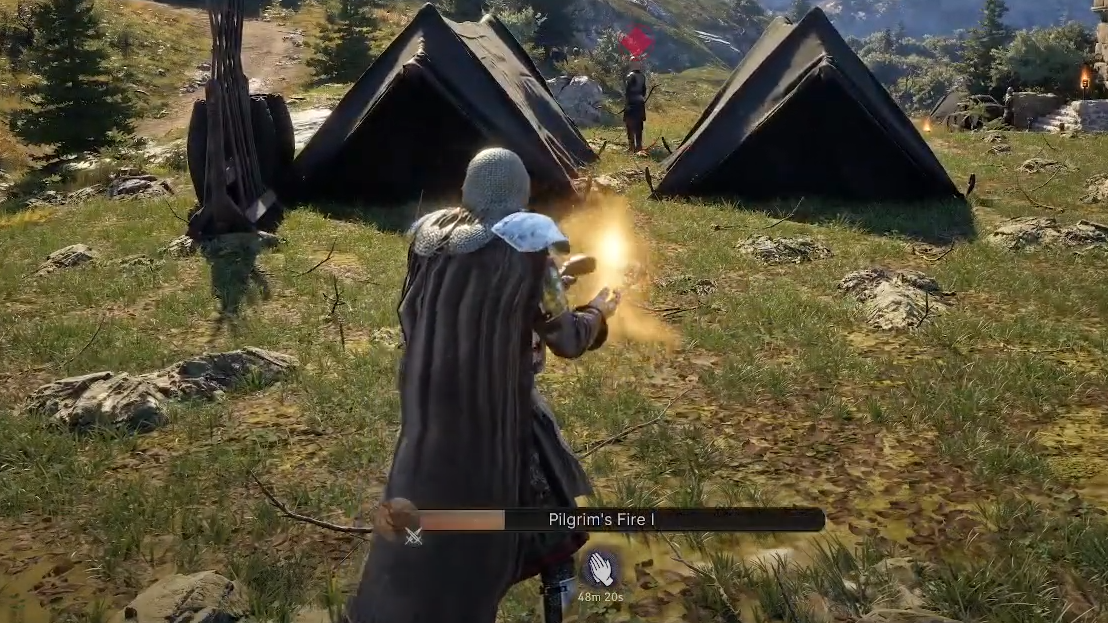
There is no “magic tree” — build identity comes from items
Pax Dei avoids a class‑locked spellbook. If you want to feel like a classic healer, you’ll stack Divine Orb, Consecrated Ground, and Detonation of Life and shore it up with Divine Shield and Chronoseer. Prefer battlefield control? Anchor on Haunting Memories, mobility with Breath of Joy, and protective timing with Chrono Ward. You can even lean into weapon specials and treat magic as a utility layer. It’s all loadout math — what you have, what you can sustain, and how quickly you can rotate your buttons.
How it plays: a few practical patterns
- Village medic: In Heartlands skirmishes and small dungeons, a kit with Divine Orb for targeted heals, Consecrated Ground for positional sustain, and Breath of Spirit for personal resource loops keeps a duo upright with minimal downtime.
- Control support: Use Haunting Memories to collapse chaotic pulls, pop Divine Shield to absorb the first wave of damage, then speed your team reposition with Breath of Joy.
- Tempo engine: Combine Chronoseer with attack speed buffs like Frenzy to create windows where your entire group dumps cooldowns safely under Chrono Ward.
Because these are itemized, you can maintain multiple armor sets and swap roles between runs. The downside: you earn these capabilities by chasing the gear, not by ticking a skill tree. Expect a gear hunt, not a respec.
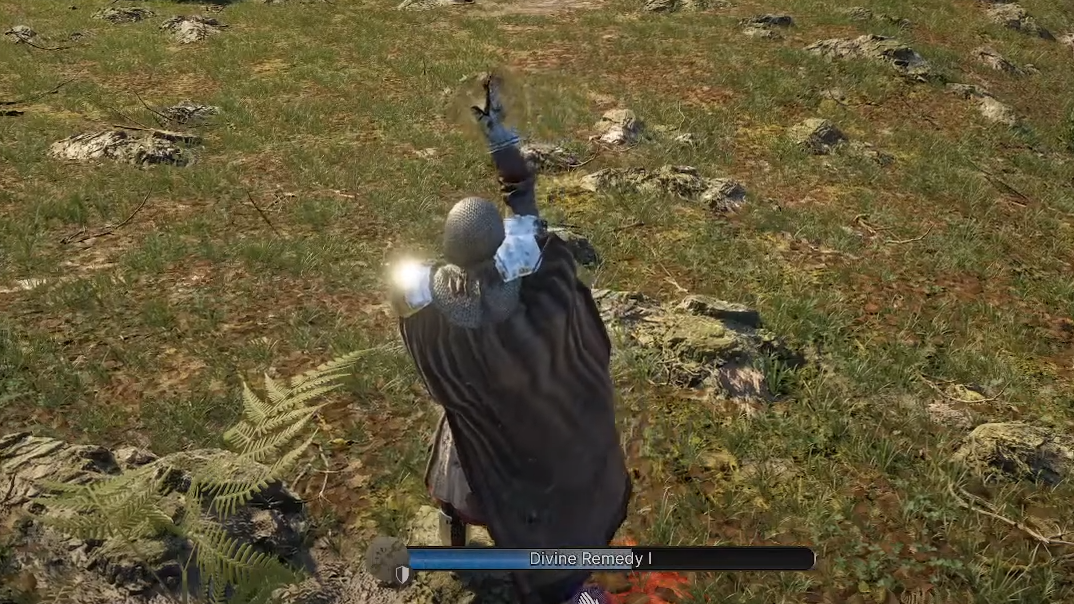
What the fiction adds to your choices
The game’s cosmology — magic as something that leaks into the natural world from older creations and beyond — is a quiet reminder to treat abilities as artifacts. You’re not mastering a school; you’re wielding a piece of something that doesn’t fully belong here. It’s why those abilities are literal items, why dungeons matter, and why Divine Miracles sit on a separate spiritual ledger.
If you’re starting from scratch, plan on a hybrid approach: farm early dungeons for a baseline healing or protection kit, invest in crafting to keep reagent needs painless, and save Grace for moments that tilt a fight or unlock a route. Magic in Pax Dei is less about a single staff and more about the web of systems — gear, groups, and the grace you can call down — that you pull together.

